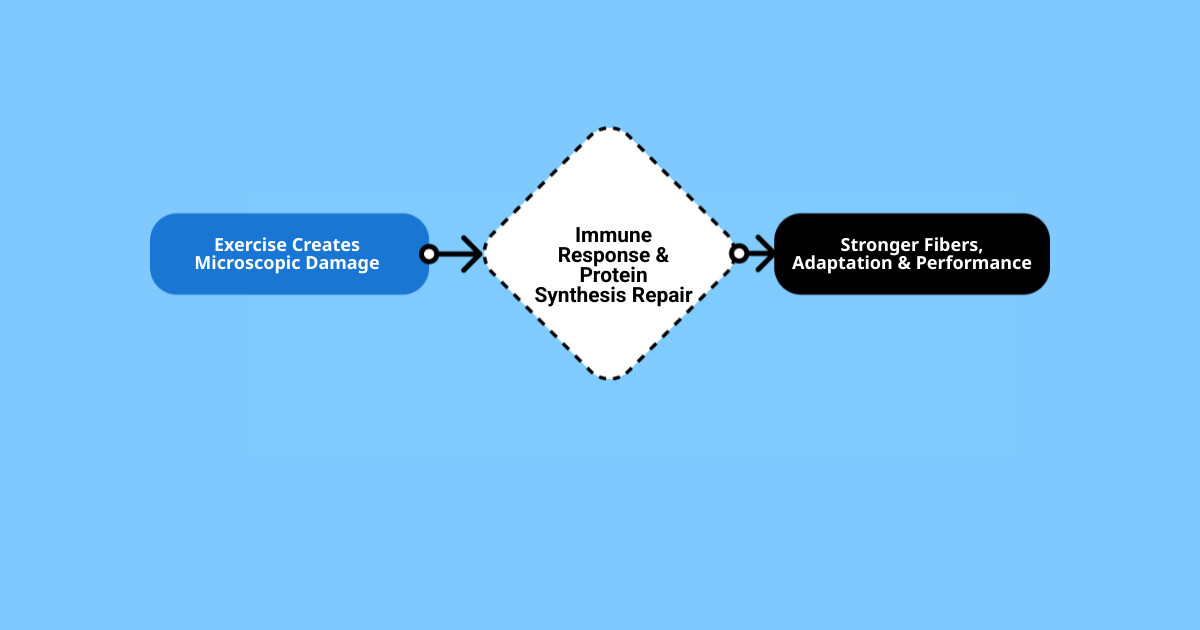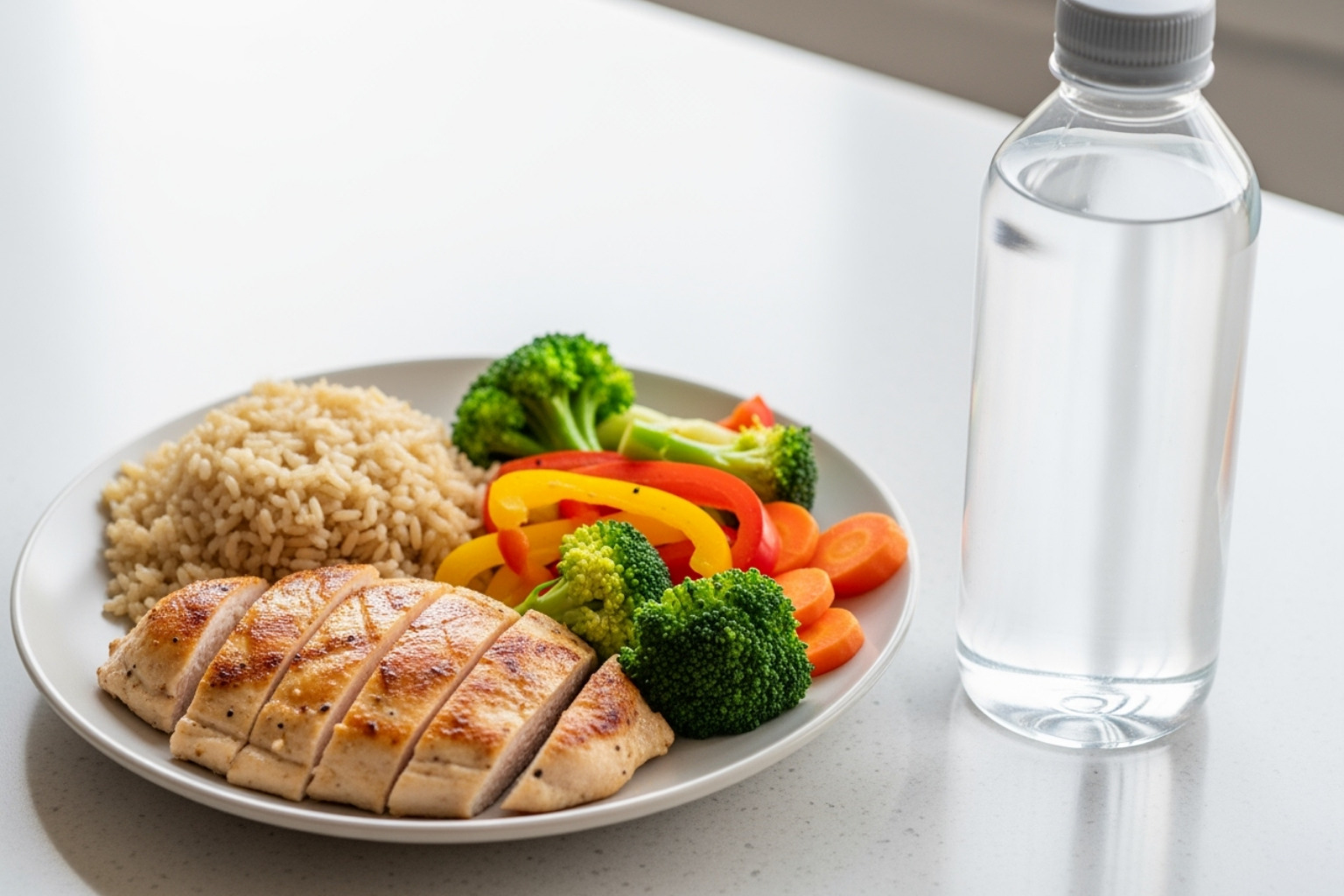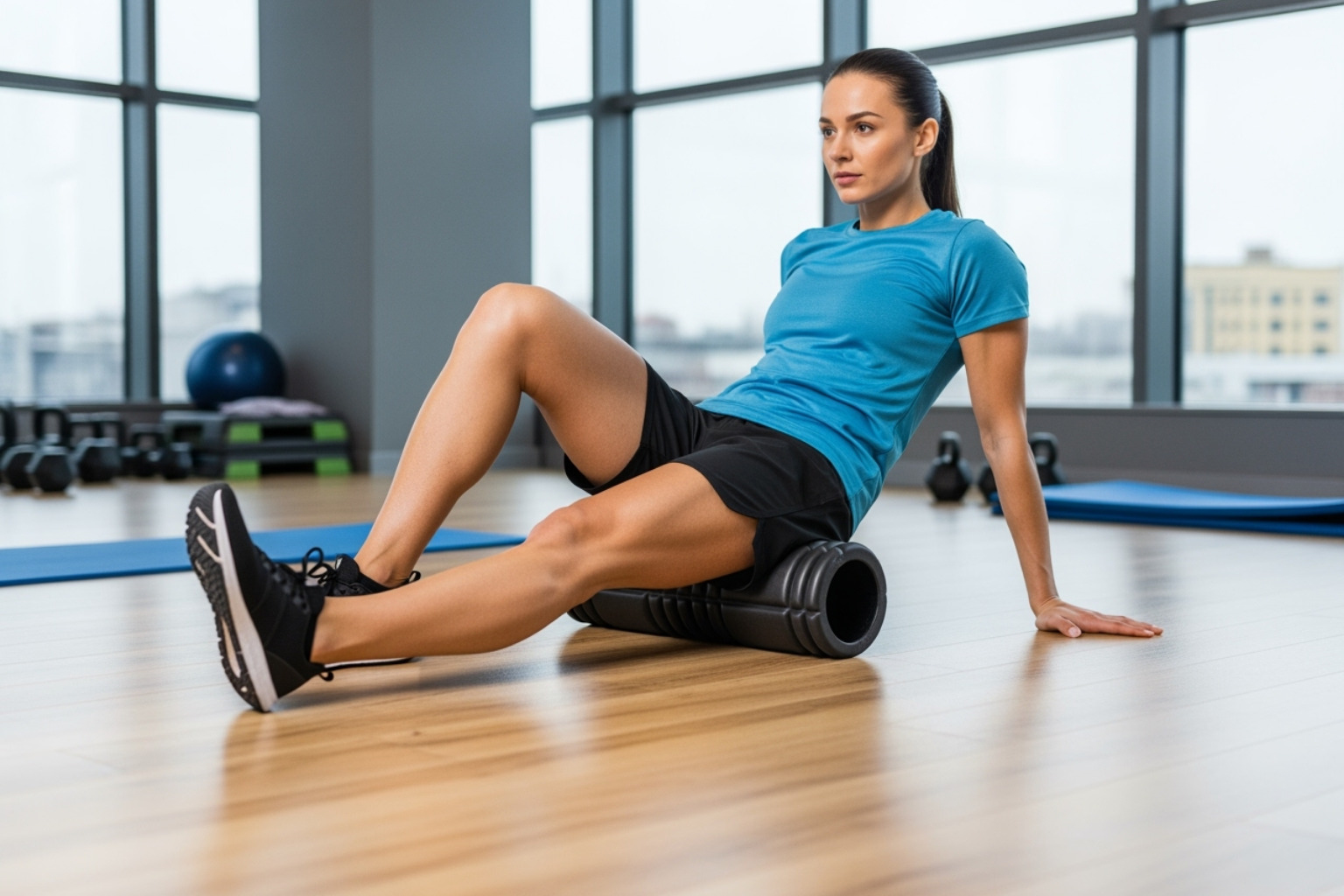Why Muscle Recovery Matters for Every Athlete and Active Individual
Muscle Recovery is the process where your body repairs and strengthens muscle tissue after exercise. Whether you're a competitive athlete or a weekend warrior, optimizing recovery is essential for reaching fitness goals and preventing injury. Workouts create microscopic tears in muscle fibers, and recovery is when your body repairs them to be stronger. Without it, you risk plateaus, burnout, and injury.
Quick Answer: Key Strategies for Faster Muscle Recovery
- Prioritize Sleep – Aim for 7-9 hours per night.
- Fuel Properly – Consume adequate protein and carbohydrates.
- Stay Hydrated – Replenish fluids lost during exercise.
- Use Active Recovery – Light movement promotes blood flow.
- Apply Targeted Relief – Use topical creams for soreness.
- Rest Adequately – Allow 48+ hours between intense sessions for the same muscles.
I'm Tony Enrico, and I've dedicated my career to helping people improve performance through better Muscle Recovery and natural pain relief. The fundamentals—nutrition, sleep, and targeted methods—make the biggest difference.

Understanding Muscle Recovery: The Science of Healing and Growth
Every tough workout initiates an intricate repair process. This is Muscle Recovery, where real adaptation happens. Exercise signals the need for change; recovery is when your body answers the call.
Related topics worth exploring:
What is Muscle Recovery and Why is it Crucial?
Muscle Recovery is the time your body needs to repair tissue, replenish energy, and adapt to exercise stress. Workouts create microscopic tears in muscle fibers, which is necessary for growth. Your body doesn't just fix this damage; it rebuilds the fibers stronger, a process called supercompensation. As explained by Dr. Adam Rivadeneyra, a sports medicine physician, this adaptation is how we improve over time.
Without proper recovery, performance stalls, injury risk increases, and you can face Overtraining Syndrome. This serious condition, affecting many athletes, can lead to hormonal disturbances, poor immune function, and burnout. Recovery isn't a luxury; it's the foundation of consistency and long-term progress.
The Physiology of Muscle Repair
The recovery process begins with Exercise-Induced Muscle Damage (EIMD). This triggers three phases:
- Inflammatory Phase: Your immune system acts as a cleanup crew, clearing damaged tissue.
- Repair Phase: Specialized satellite cells (muscle stem cells) activate to patch up muscle fibers. Your body increases muscle protein synthesis, using protein from your diet as building blocks.
- Remodeling Phase: Over weeks, the repaired fibers become thicker and stronger, leading to muscle growth (hypertrophy). Hormones like growth hormone are key orchestrators in this phase.
Understanding this shows that recovery is an active construction period. Give your body the time and resources it needs, and it will reward you with progress. You can read more about EIMD from Physio-pedia.
The Foundation of Recovery: Nutrition and Hydration
After exercise, your muscles are a construction site needing the right materials to rebuild. Nutrition and hydration are the foundation of effective Muscle Recovery.

Fueling for Repair: Macronutrients and Hydration
Each macronutrient plays a specific role in recovery:
- Protein: Provides amino acids to rebuild damaged muscle fibers. The International Society of Sports Nutrition recommends 1.4 to 2.0 grams of protein per kilogram of body weight daily for active individuals. Total daily intake is more important than precise timing.
- Carbohydrates: Refill your muscles' primary fuel source, glycogen. Research shows that consuming carbs post-exercise recharges these energy stores for your next workout. Combining carbs with protein can improve recovery.
- Healthy Fats: Essential for hormone production and managing inflammation. Omega-3 fatty acids (from fish, walnuts, and flaxseeds) are particularly beneficial.
Even mild dehydration can impair Muscle Recovery. Water transports nutrients and removes waste. The U.S. Anti-Doping Agency suggests drinking about 1.5 liters of fluid for every kilogram (or 3 cups per pound) you lose during exercise. When you sweat, you also lose electrolytes like sodium and potassium, which may need replenishing.
Certain micronutrients also help. Antioxidants from fruits and vegetables combat exercise-induced stress. Tart cherry juice has been shown to reduce muscle soreness, and creatine monohydrate can aid recovery by reducing muscle damage. However, a balanced diet of whole foods is the best source for these essential vitamins and minerals.
Essential Recovery Strategies: Rest, Sleep, and Active Methods
While fuel is vital, sometimes the best thing for Muscle Recovery is rest. Quality sleep and smart recovery methods are cornerstones of any effective plan.
The Power of Sleep and Smart Rest
Sleep is arguably the single most important factor for Muscle Recovery. During deep sleep, your body releases the majority of its growth hormone, which is crucial for tissue repair. It also reduces the stress hormone cortisol, which can break down muscle tissue. Aim for seven to nine hours of quality sleep per night. Research confirms that sleep deprivation significantly impairs muscle recovery. If you have after workout soreness, a good night's sleep is a powerful ally.
Recovery isn't always about being completely still. It's important to understand the difference between two approaches:
- Passive Recovery: This is complete rest. Taking a full day off gives your body uninterrupted time to repair tissue and replenish energy, which is essential after intense workouts.
- Active Recovery: This involves gentle, low-intensity movement like walking, swimming, or yoga. It promotes blood flow, which helps deliver nutrients and flush out metabolic waste, reducing stiffness and soreness. You can learn more about how to reduce muscle soreness after a workout with these methods.
Cross-training (e.g., a runner trying swimming) is another great form of active recovery. The key is to listen to your body—some days require complete rest, while others benefit from light movement.
Advanced Recovery Tools and Techniques
Beyond the fundamentals, certain tools can optimize Muscle Recovery by providing targeted relief and improving circulation.

Targeted Relief and Therapies
Hands-on methods can make a significant difference. Massage and myofascial release increase blood flow, helping to flush out waste and reduce delayed onset muscle soreness. Foam rolling is a practical self-massage technique that lets you target specific trigger points or knots, restoring muscle elasticity.
For immediate, localized relief, topical creams are highly effective. Ingredients like menthol create a cooling sensation that disrupts pain signals to the brain. When comparing oral vs. topical muscle pain relief, topicals offer direct application to the sore area with minimal systemic side effects. Our Neuropasil muscle pain relief cream uses a natural blend of Aloe, Urea, and Menthol to provide fast-acting, soothing relief for soreness, strains, and aches, making it a game-changer for many athletes.
Other useful techniques include:
- Heat therapy: Warm baths or heat packs increase blood flow, relax tense muscles, and improve flexibility.
- Compression garments: These snug-fitting items apply gentle pressure to improve circulation and may help reduce post-exercise soreness and swelling.
Experiment to find which of these tools best complements your foundational recovery habits.
Preventing Overtraining and Listening to Your Body
There's a thin line between pushing your limits and going too far. Preventing overtraining is a key part of Muscle Recovery, as constant exertion without rest leads to diminishing returns and potential harm.
Recognizing and Responding to Your Body's Signals
Your body communicates its needs, but we often fail to listen. Ignoring the signs of inadequate Muscle Recovery can lead to overtraining syndrome and sideline you with injuries. Watch for these red flags:
- Persistent soreness that lasts more than 72 hours.
- Chronic fatigue or a feeling of bone-deep exhaustion.
- Decreased performance where workouts feel unusually difficult.
- An liftd resting heart rate first thing in the morning.
- Mood disturbances like irritability, anxiety, or a loss of motivation.
- Frequent illness due to a suppressed immune system.
- Sleep disturbances or insomnia despite being tired.
Many of these issues stem from overuse injuries. Learning how to prevent muscle strains is a critical part of smart training. For more detail, see this Guide to Overtraining Syndrome.
Your recovery needs are unique and depend on factors like training intensity, fitness level, age, and lifestyle stress. A demanding job or personal worries add to your body's total stress load, increasing your need for recovery. Lifestyle choices also matter; alcohol consumption can slow muscle repair, and tobacco use is linked to an increased risk of muscular injury.
Listen to your body. Ask yourself how you feel mentally and physically. Answering honestly will help you decide when to rest, adjust your training, or change your recovery approach. Sustainable progress is the goal.
Frequently Asked Questions about Muscle Recovery
Here are answers to common questions about optimizing your Muscle Recovery.
How long does muscle recovery take?
There's no single answer. Recovery time depends on workout intensity, your fitness level, age, nutrition, and sleep quality. A light workout might require only 24 hours, while a challenging strength session could need 48-72 hours. Major efforts like a marathon may require a week or more for full recovery.
Can I work out with sore muscles?
Yes, working out with mild Delayed Onset Muscle Soreness (DOMS) is generally safe. In fact, light active recovery like walking or gentle yoga can help by increasing blood flow. However, you should avoid intense training on significantly sore muscles. Never push through sharp, shooting, or joint pain, as these are signs of potential injury. The golden rule is to listen to your body.
What is the single most important factor for muscle recovery?
If one factor had to be chosen, it would be adequate sleep. During deep sleep, your body releases the majority of its growth hormone, which is essential for repairing and building muscle. Sleep also helps regulate stress hormones and supports the immune system. While nutrition, hydration, and other techniques are vital, they are all less effective without the foundational repair that happens during 7-9 hours of quality sleep.
Conclusion: Your Path to Faster Recovery
The magic of fitness happens after your workout. Muscle Recovery is where your hard work pays off, turning effort into adaptation and strength. Without proper recovery, progress stalls.
Optimizing recovery is about mastering the fundamentals:
- Prioritize 7-9 hours of quality sleep.
- Fuel your body with adequate protein and carbs.
- Stay hydrated.
- Listen to your body's signals for rest.
For targeted relief from soreness, tools like Neuropasil muscle pain relief cream can make a significant difference. Our natural blend of Aloe, Urea, and Menthol provides fast-acting, soothing relief right where you need it, helping you stay comfortable as your muscles rebuild.
Recovery is a skill. Be consistent with your habits, be patient with your body, and use smart tools to support the process. Give your muscles the recovery they deserve, and you'll open up sustainable progress.
References
Throughout this article, we've drawn on trusted research and expert insights to help you understand Muscle Recovery from every angle. If you're curious to dive deeper into any of the topics we've covered, here are the sources that informed our discussion:
Al-Bashaireh AM, et al. (2018). The effect of tobacco smoking on musculoskeletal health: A systematic review. Journal of Environmental and Public Health. This comprehensive review explores how smoking impacts our muscles and bones, revealing connections between tobacco use and increased injury risk. https://www.hindawi.com/journals/jeph/2018/4184190/
Dáttilo M, et al. (2020). Effects of sleep deprivation on acute skeletal muscle recovery after exercise. Medicine and Science in Sports and Exercise. This fascinating study demonstrates just how crucial those hours of shut-eye are for muscle repair and inflammation control. https://journals.lww.com/acsm-msse/Abstract/2020/02000/EffectsofSleepDeprivationonAcuteSkeletal.28.aspx
Davis HL, et al. (2020). The effect of sports massage on performance and recovery: A systematic review and meta-analysis. BMJ Open Sport & Exercise Medicine. A thorough analysis of multiple studies showing the real benefits of massage for athletes and active individuals. https://bmjopensem.bmj.com/content/6/1/e000614
Fluids and hydration. (n.d.) U.S. Anti-Doping Agency (USADA). Practical, science-backed recommendations on staying properly hydrated during training and competition. https://www.usada.org/athletes/substances/nutrition/fluids-and-hydration/
Hettchen M, et al. (2019). Effects of compression tights on recovery parameters after exercise induced muscle damage: A randomized controlled crossover study. Evidence-Based Complementary and Alternative Medicine. This research examines how compression gear may help speed up the recovery process. https://www.hindawi.com/journals/ecam/2019/5698460/
Jäger R, et al. (2017). International society of sports nutrition position stand: protein and exercise. Journal of the International Society of Sports Nutrition. The definitive guide on protein requirements for athletes, including timing and optimal amounts for muscle building. https://jissn.biomedcentral.com/articles/10.1186/s12970-017-0177-8
Kerksick CM, et al. (2017). International society of sports nutrition position stand: Nutrient timing. Journal of the International Society of Sports Nutrition. An in-depth look at when to eat what for maximum recovery benefits. https://www.tandfonline.com/doi/full/10.1186/s12970-017-0189-4
Kreher JB, Schwartz JB. (2012). Overtraining Syndrome: A Practical Guide. Sports Health. Essential reading for understanding the warning signs and consequences of pushing too hard without adequate rest. https://www.ncbi.nlm.nih.gov/pmc/articles/PMC3435910/
Lakićević N, et al. (2019). The effects of alcohol consumption on recovery following resistance exercise: A systematic review. Journal of Functional Morphology and Kinesiology. This review examines how alcohol impacts muscle repair and what that means for your training goals. https://www.ncbi.nlm.nih.gov/pmc/articles/PMC7739274/
McHugh MP, et al. (2022). "Precovery" versus recovery: Understanding the role of cherry juice in exercise recovery. Nutrients. A detailed look at how tart cherry juice may help reduce inflammation and muscle soreness. https://www.ncbi.nlm.nih.gov/pmc/articles/PMC9306613/
Morton RW, et al. (2017). A systematic review, meta-analysis and meta-regression of the effect of protein supplementation on resistance training-induced gains in muscle mass and strength in healthy adults. British Journal of Sports Medicine. Comprehensive analysis of protein's role in building muscle and strength. https://www.ncbi.nlm.nih.gov/pmc/articles/PMC5867436/
Rodrigues F, et al. (2023). The association between training frequency, symptoms of overtraining and injuries in young men soccer players. Journal of Clinical Medicine. Important insights into how training frequency relates to overtraining symptoms and injury risk. https://www.ncbi.nlm.nih.gov/pmc/articles/PMC10138529/
Wax B, et al. (2021). Creatine for exercise and sports performance, with recovery considerations for healthy populations. Nutrients. A thorough examination of how creatine supplementation supports both performance and recovery. https://www.ncbi.nlm.nih.gov/pmc/articles/PMC8228369/
West DWD, et al. (2017). Whey protein supplementation improves whole body protein metabolism and performance recovery after resistance exercise: A double-blind crossover study. Journal of the International Society of Sports Nutrition. Specific research on whey protein's benefits for muscle recovery. https://www.ncbi.nlm.nih.gov/pmc/articles/PMC5537849/
Physio-pedia. (n.d.) Exercise Induced Muscle Damage. A comprehensive educational resource explaining the mechanisms and management of EIMD. https://www.physio-pedia.com/ExerciseInducedMuscle_Damage
Orange Orthopaedics. (n.d.) Adam Rivadeneyra, MD. Information about Dr. Rivadeneyra's expertise in sports medicine and the body's repair processes. https://www.orangeorthopaedics.com/rivadeneyra-en.html
These resources represent some of the best current scientific thinking on Muscle Recovery, and we encourage you to explore them if you want to learn even more about optimizing your body's natural healing processes.















